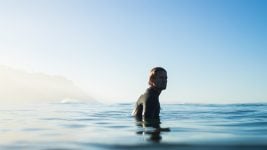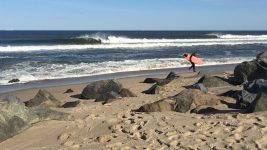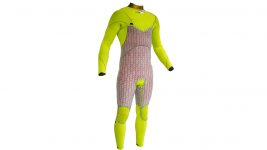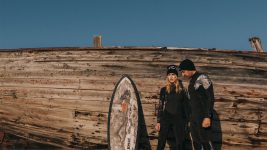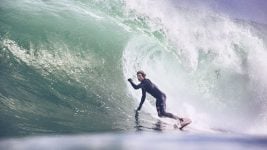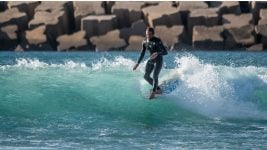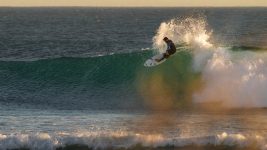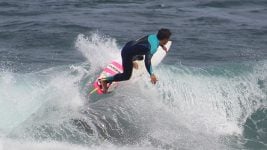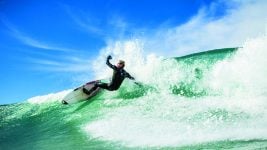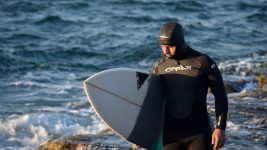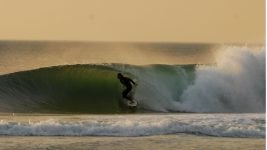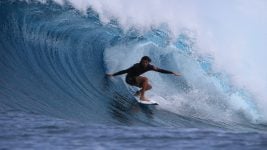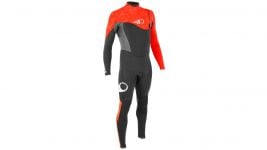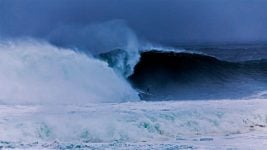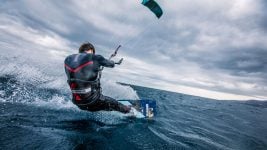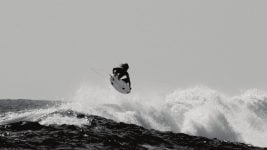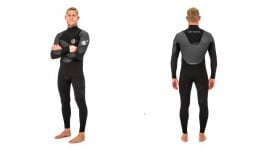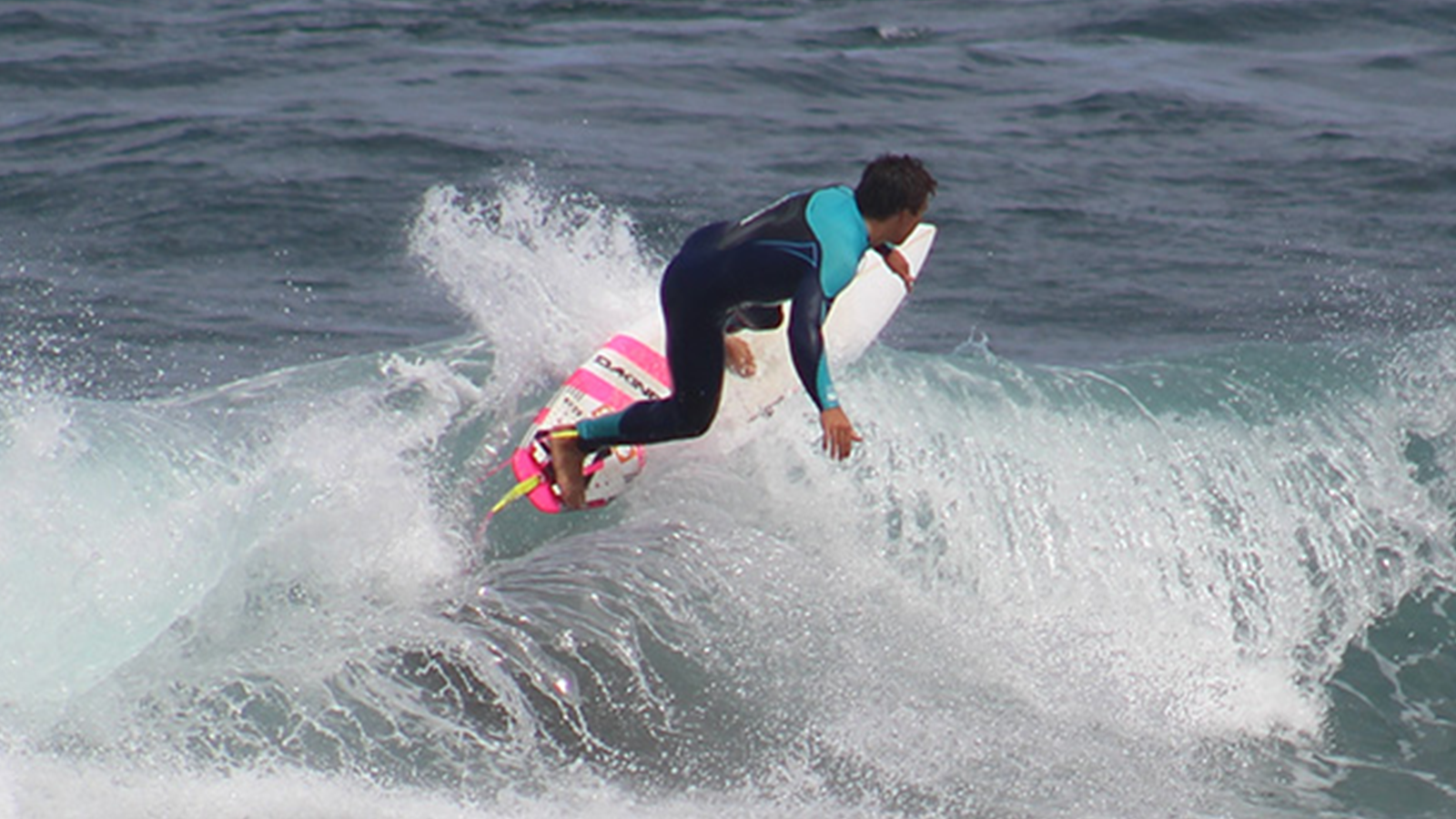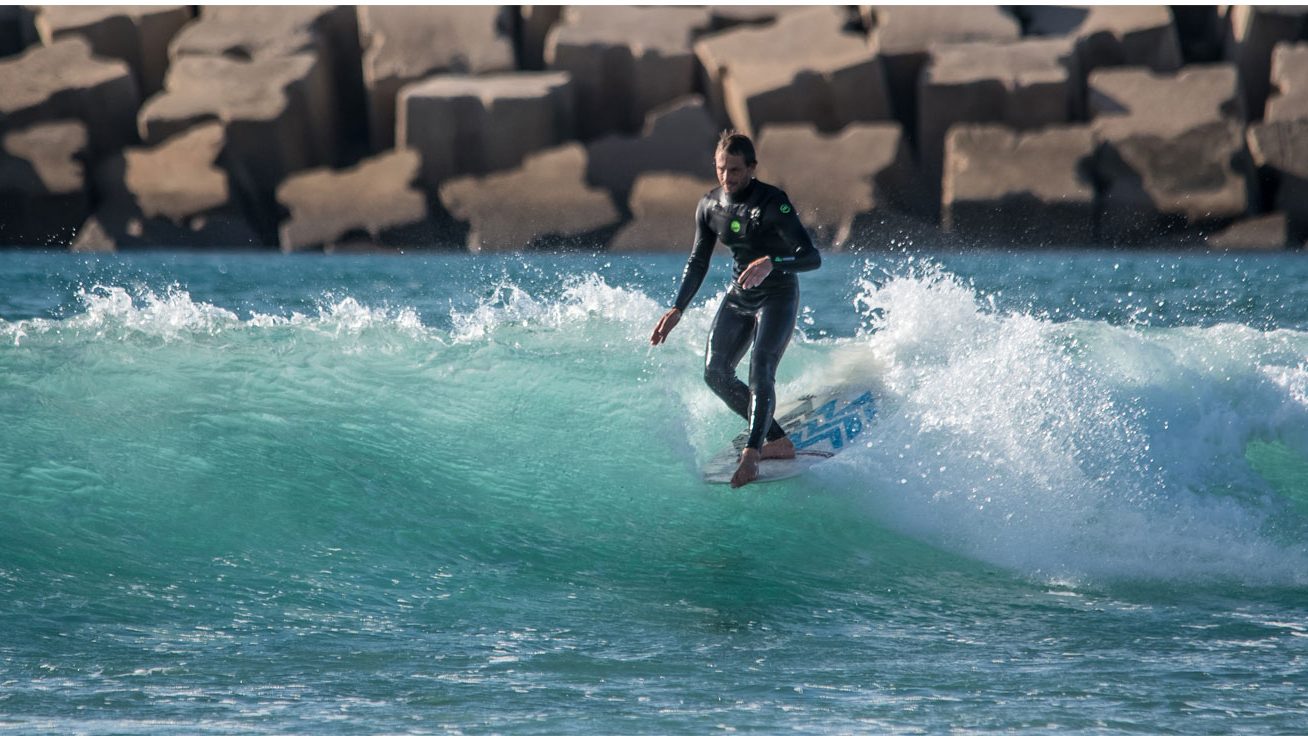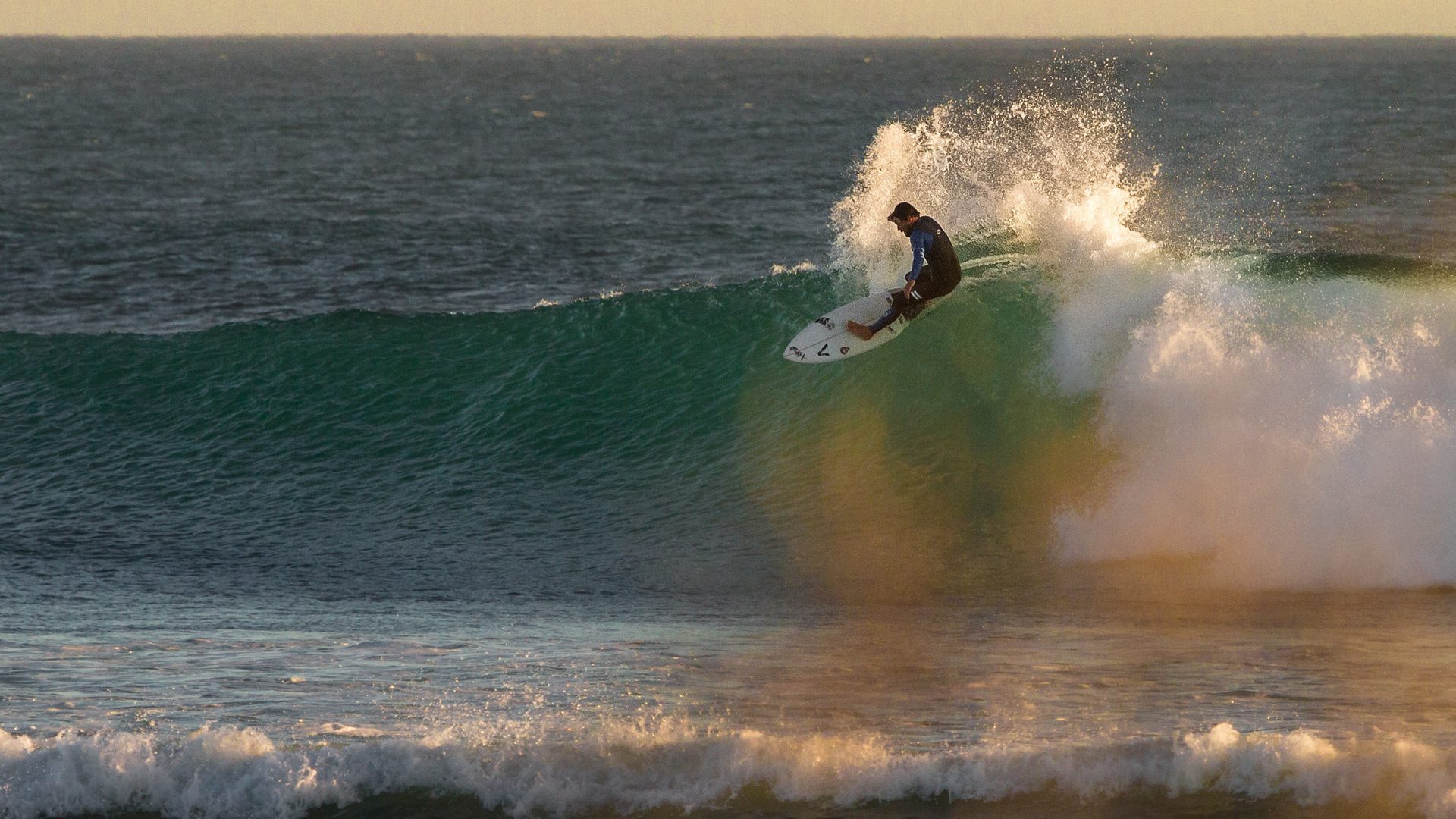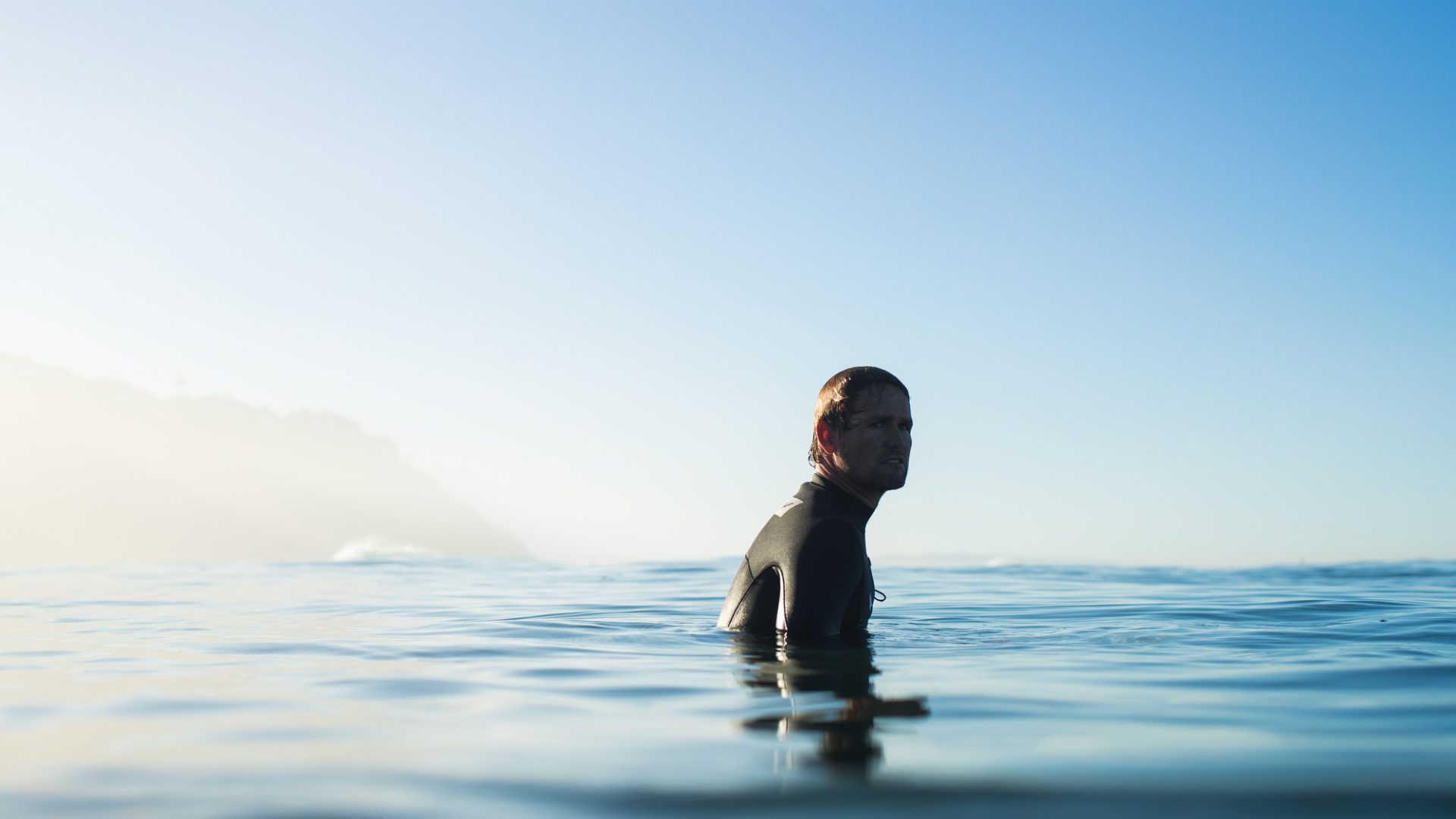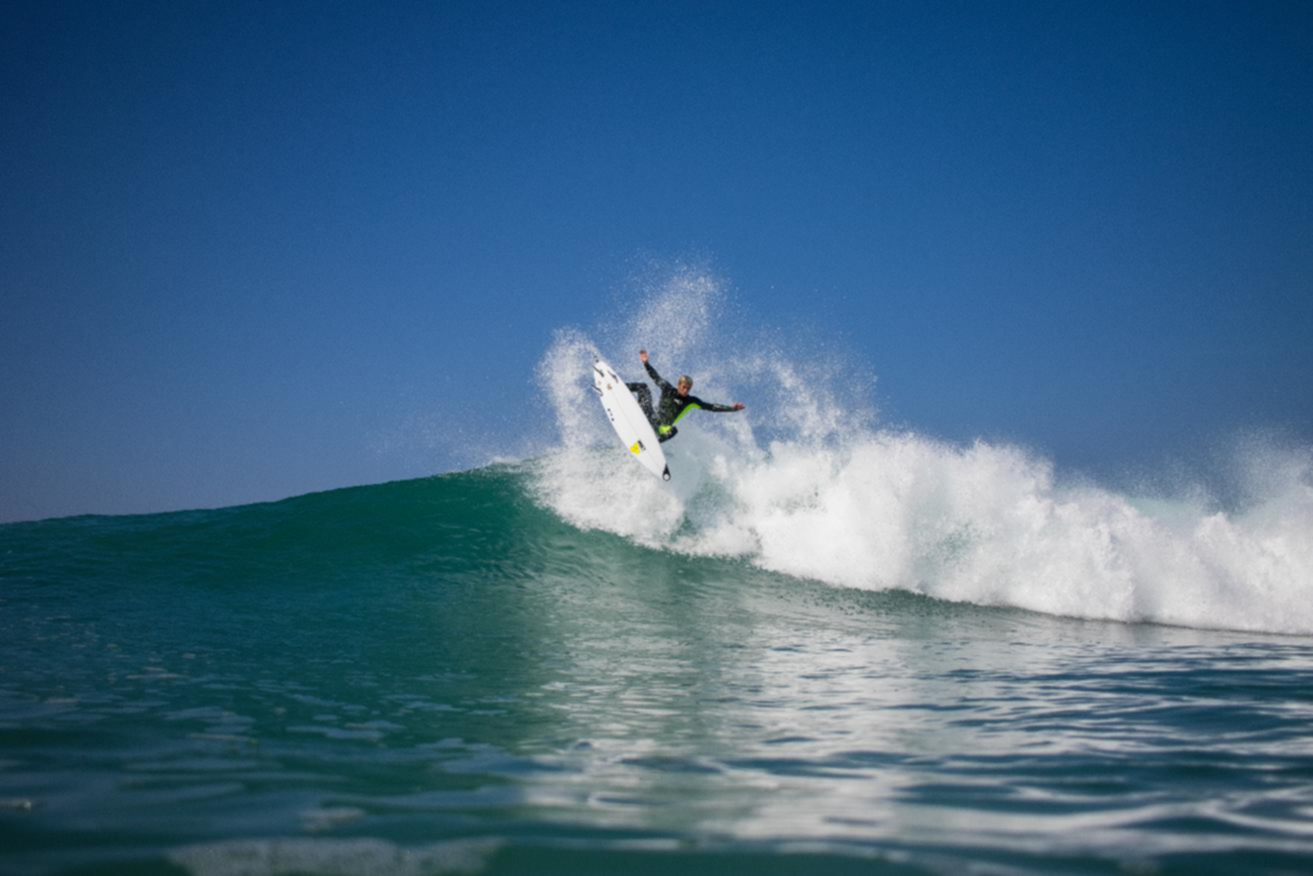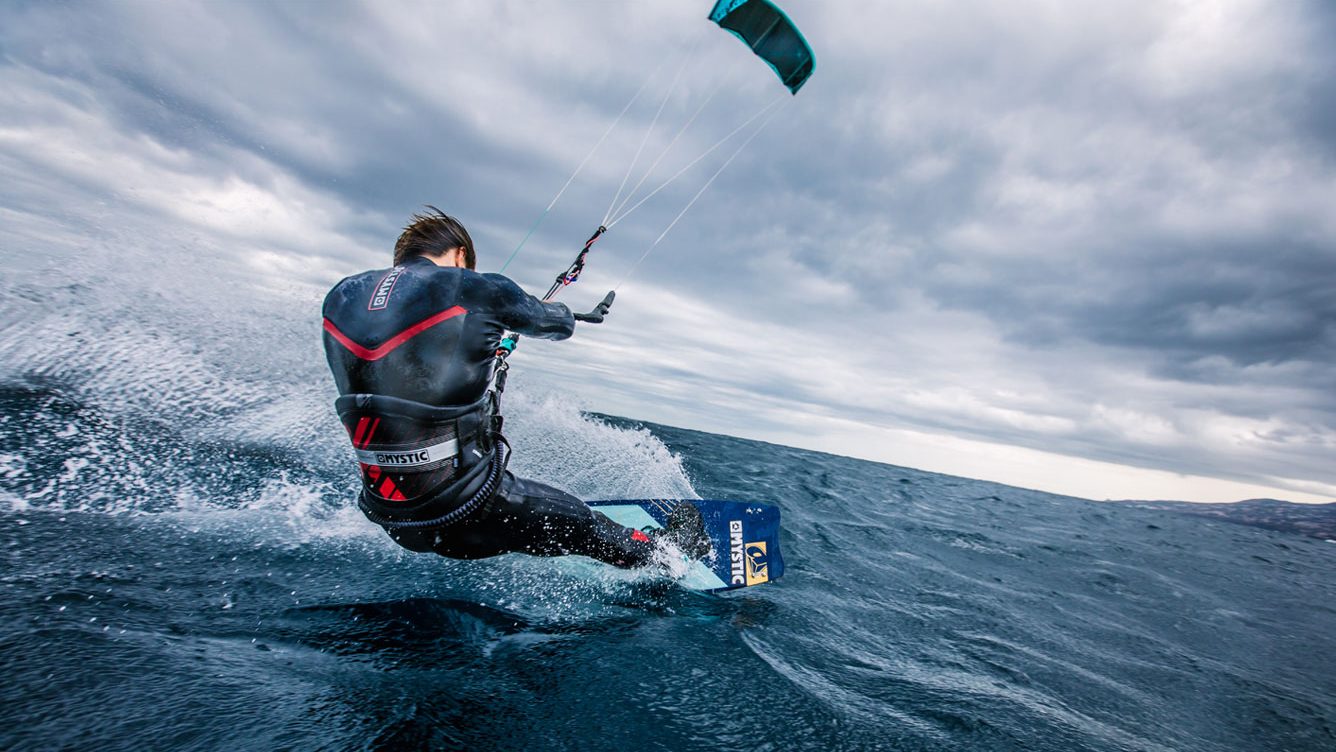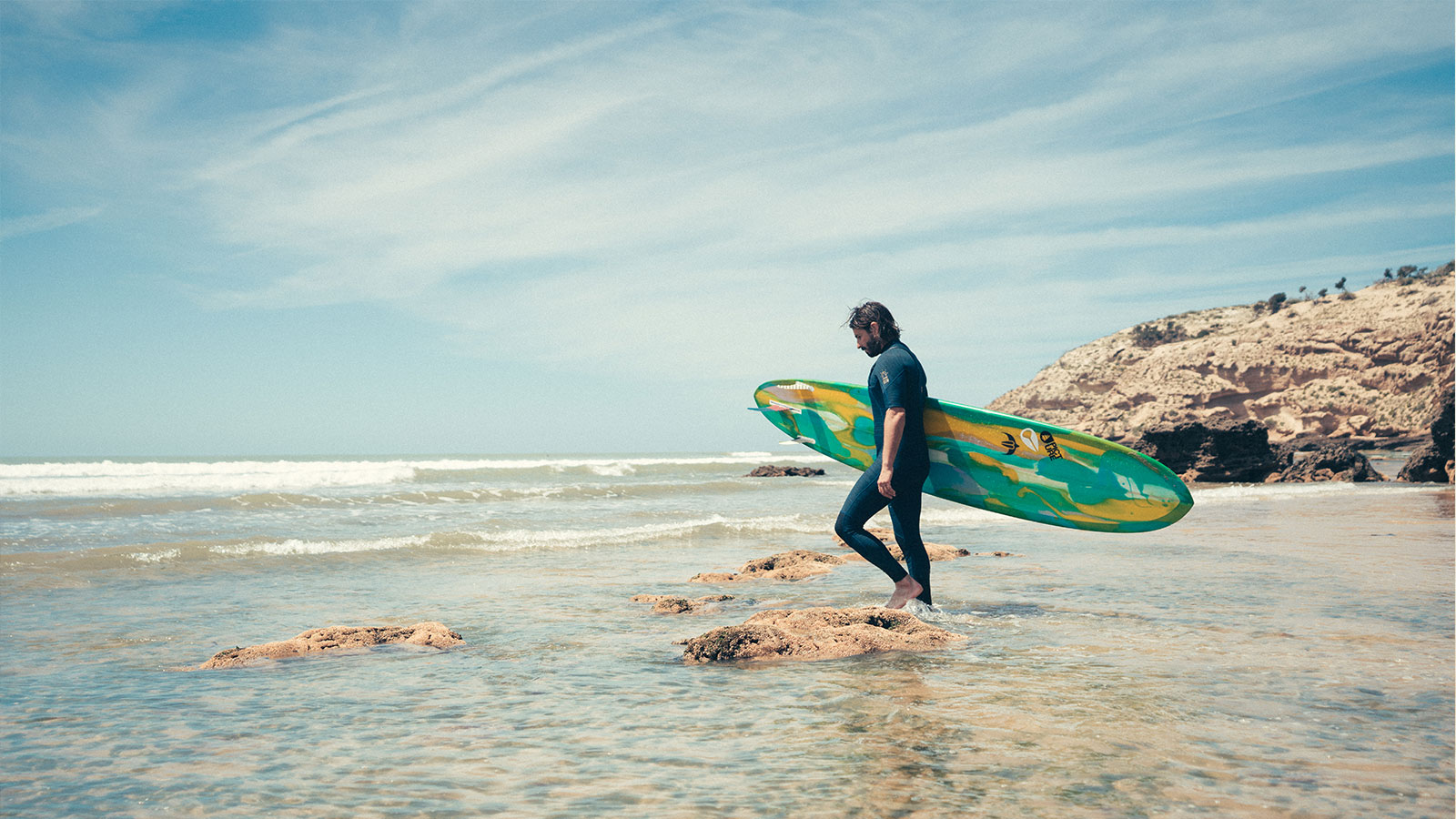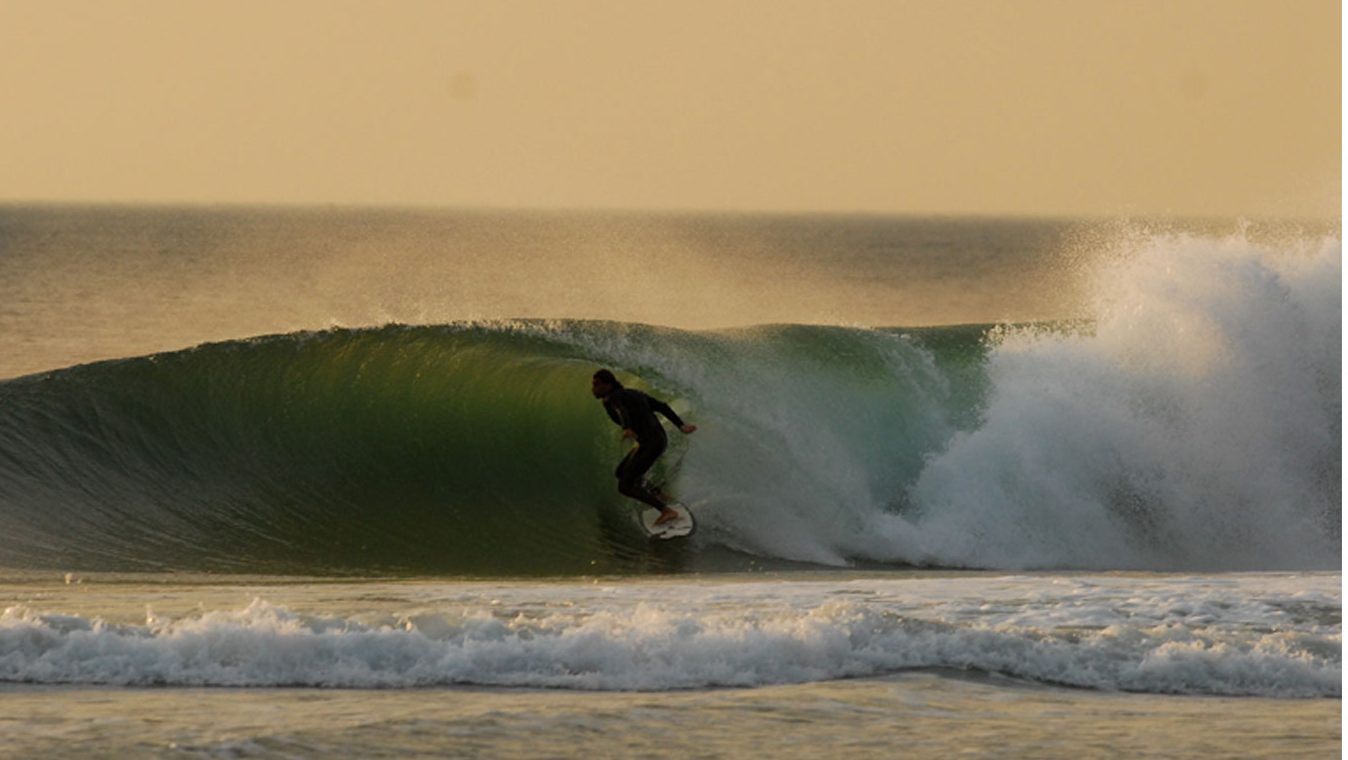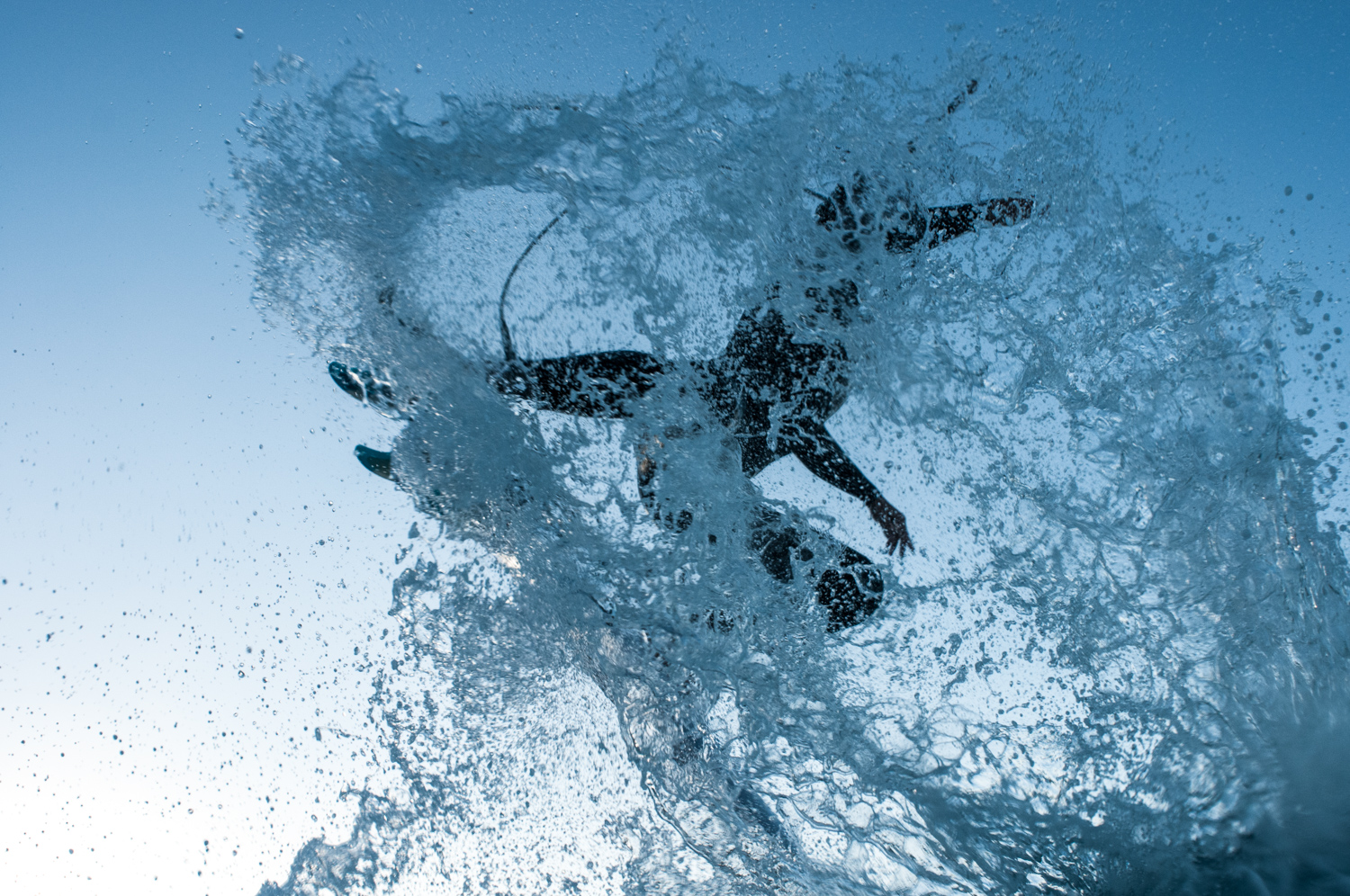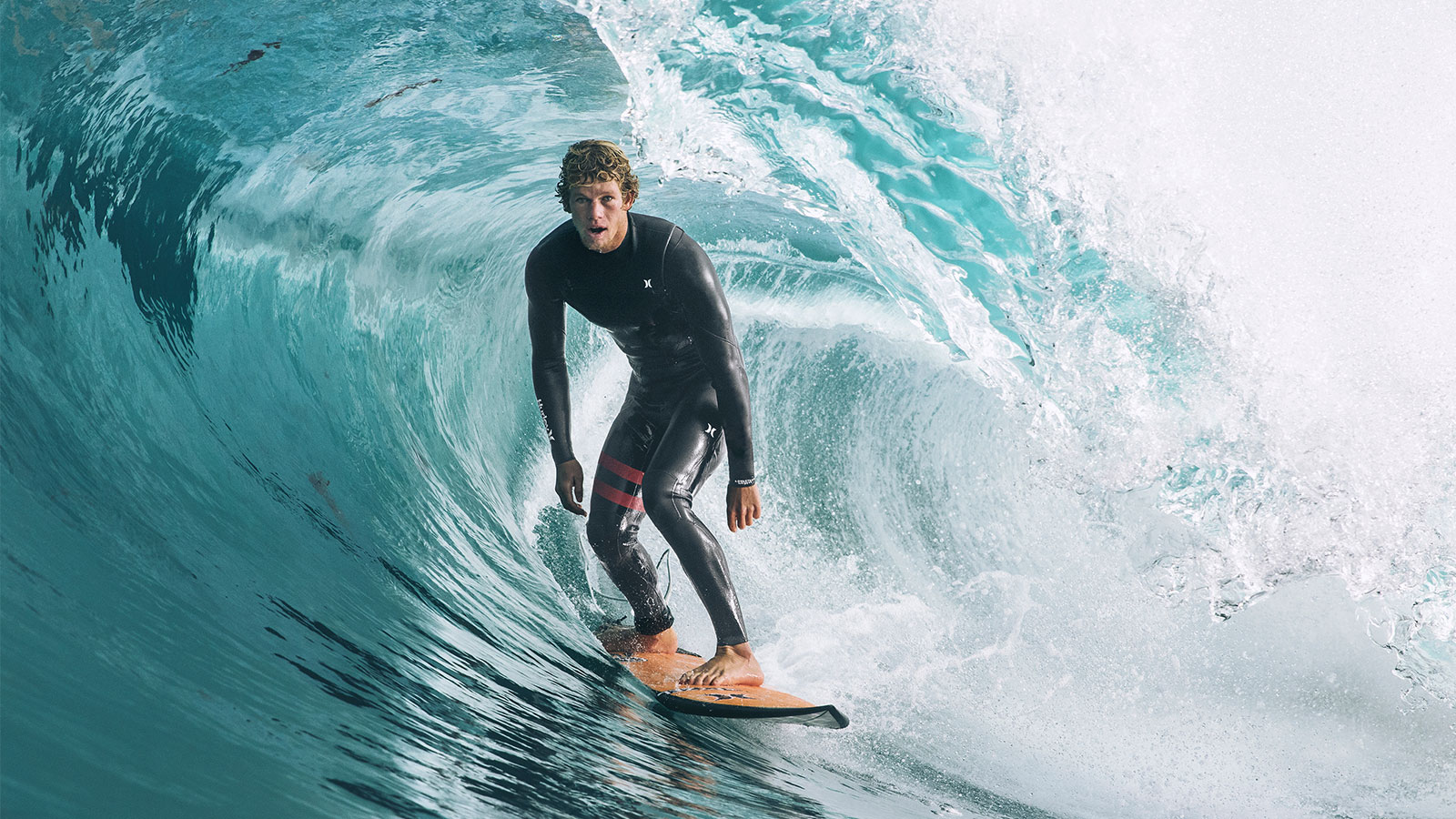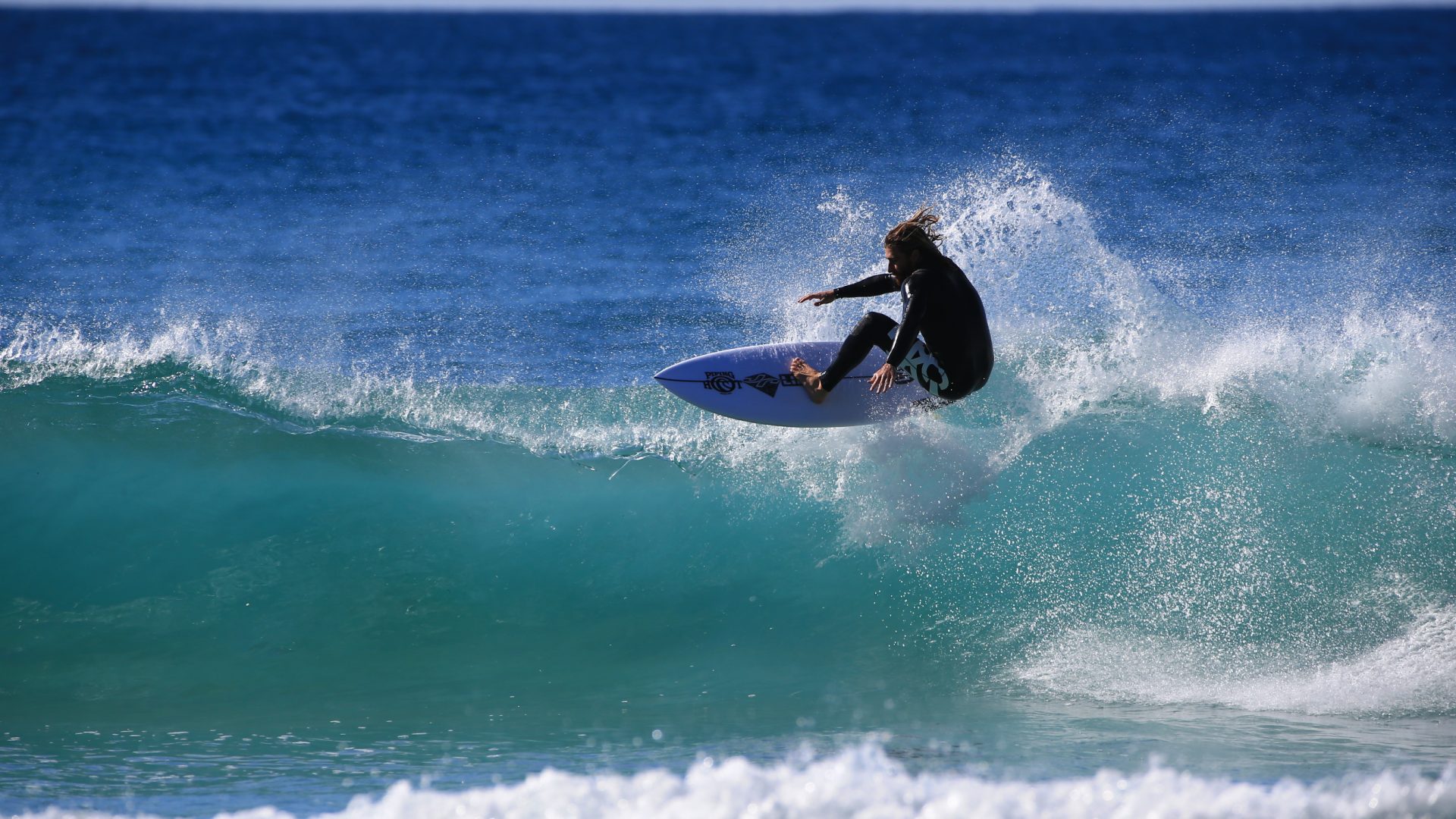Wetsuits SS19
The wetsuits main objective is to make you forget it’s there, like a second skin. This holds true even more when water temperatures heat up and wetsuits lose a few millimetres of neoprene. For spring/summer 2019, wetsuit brands are back at work coming up with ever more functional collections. David Bianic.
The best way to check the health of the surf industry isn’t through textiles, it’s all about neoprene. In winter, it goes without saying, but in summer too, in the vast majority of the big surf countries, be it a full suit or not, wearing some kind of wetsuit is indispensable if you want to feel like it’s always summer on the inside. “Although we would all like to surf in boardies during the summer, most of us in Europe don’t have that luxury,” European Product Manager at O’Neill Wetsuits, Tom Copsey reminds us, “especially the core market who are in the water at 6 am before work.”
For brands, it’s a question of distinguishing the core clientele from the more volatile summer clientele, made up of year-round surfers and others, beginners, those who only surf occasionally, or even just your average… bather. For a historic wetsuit brand like Alder, you can’t pretend otherwise, thinks Director of Production, John Westlake: “Most of the people buying our summer wetsuits will not be continuing their sport all the way through the winter months.” This acknowledgement is creating a veritable dilemma at the brands, which must deal with a more segmented clientele than ever when it comes to spring/summer neoprene collections. For Typhoon rep Pauline Nolan there are three main families: “Firstly, there are the beach buddies, who are looking for the budget suits. This market is then followed by the recreational leisure audience that is looking for ‘good value for money’ kit, which is serviceable, comfortable and durable. Then the core market individual will be sourcing the right summer suit to satisfy their requirements to excel in their chosen pursuit.” But as Tiki Designer Phil Bridges qualifies, sometimes the market isn’t so easy to read with “some occasional surfers buying the most advanced gear and some regulars buying the cheaper products.” It’s up to the brands to position themselves clearly, like Hurley where you won’t find any “leisure-oriented wetsuits,” EMEA Marketing Manager Pierre-Jean Rueda tells us: “We do not want to battle for entry price market.”
A SEAMLESS JOB
Traditionally, one of the biggest criteria for differentiating between spring/summer wetsuits has been the choice of stitching: flatlock or blind stitch. This quality/price difference is still valid according to the vast majority of brands we spoke to, such as Alder: “Flatlock suits are perfect for the high summer season with it’s cost-benefit, while the blind stitch suits allow for an extended season,” explained John Westlake. Rip Curl also offer an intermediate option with their exclusive E-stitch that offers more stretch than classic flatlock, but isn’t waterproof like the high-end GBS (glued and blindstitched) seams. There are even more options at O’Neill, on top of flatlock and Triple GBS offers on their highest end seams: “GBS with TBX tape, Fluid Seam Weld and Double Super Seam Weld in our Psycho Series” said Tom Copsey very precisely. But, watch out for the customer service says warns Phil Bridges from Tiki: “We’ve also removed all Liquid Seal from our suits as this is just a longevity nightmare.” The best solution of all is to limit the total number of stitches as much as possible, William Doornekamp from Jobe assures us while developers are betting on the Minimal Seam Technology developed in collaboration with “local universities to minimize the usage of seams and extra panels.” And why not do away with seams entirely? That is the innovation offered by Volte Wetsuits in their 2mm top “in a sonic welded seam construction,” revealed RJ Dunzleman. The handmade label is being pushed to the limit at Hurley, haut couture style on the high-end 3/3mm Advantage Elite range, “built by hand, one at a time with supple, premium Japanese neoprene,” says PJ Rueda.
NEOPRENES AND LININGS
Even if no one is reinventing the wheel next year, the wetsuit sector continues to refine it’s offer from year to year. Take, for example, the weight of the Red Cell from Body Glove, “30% lighter while re-engineering our seam placement (less seams)”, specifies the design department. Weight is also a challenge at C-Skins, that the brand is stepping up to with the new X Foam neoprene, “a combination of the lightest foam and the stretchiest foams available.” ION and ONDA have similar ideas with two new lighter kinds of neoprene called Ifoam and Ace Foam. Madness is borrowing catwalk lexicon to launch a new collection baptized Couture, “100% full super stretch using the best materials available in the market with a focus on comfort, fitting and elegance,” explains Marketing and Team Manager, Benoît Brecq.
As for what has become the object of everyone’s attention, the polar/poly fleece linings are getting more and more sophisticated. Most notably the Flex Energy system from Rip Curl, “a revolutionary lining that creates heat when stretched,” the head of technical products Jonathan Cetran assures us, as well as their E5 FlashLining “that funnels water rapidly out of the suit once it’s hung up,” for faster drying. The same idea(s) have been used in a different manner at Mystic where graphite has been incorporated into the internal Flaremesh lining “to create a layer that reflects heat,” with a jacquard mesh to help water flow off better, explains Edwin Schaap, who is in charge of waterwear design. There are numerous innovations on the outside of the suit as well to help counter wind chill and keep more heat inside, like the Black Diamond Coating by Soöruz, “a diamond-shaped coating on the fabric that helps reduce the effect of the wind, capture the sun’s heat and reduce water infiltrations without the fragility of smooth neoprene,” says Co-Founder, Yann Dalibot.
ENVIRONMENTALLY FRIENDLY WETSUITS
If you’re looking for technological innovation, you need to check out the eco-friendly aisle. Not long ago, only a few brands were making it a true selling point; a movement brought to the forefront by Patagonia that is now being adopted by the competition. The young brand NCHE has joined that list and is now turning its back on solvent based glue “eliminating any harmful volatile organic compounds (VOC),” affirms Founder and Designer, Mic Eaton. That is 600 grams less solvent per wetsuit, a fact not to be ignored. NCHE has also decided to use recycled polyester for their external jersey layer and the internal lining, made from recycled plastic bottles: “There are 45 x 600ml plastic PE bottles in each wetsuit.” Patagonia continues to innovate and is using a new tinting method for its liners, “saving 100L of water and 96% CO2 per suit compared to conventional dyeing that we did in the past,” points out Gabe Davies. Pioneers in the field of natural rubber, the brand is pressing for a massive use of materials like YulexTM: “If sourced responsibly, natural rubber can improve the average CO2 impact of a suit by ~80%, imagine that impact when multiplied across the entire industry.” Coldwater surfing brand Finisterre will continue using Yulex as well in 2019 on its Nieuwland models.
For next spring/summer, French brand Picture Organic Clothing will release a new EicoPrene construction, produced from recycled tires, less expensive than their models manufactured with NaturalPrene, while “still using 100% recycled polyester for the inside and outside lining, all glued with an eco water based glue,” adds Co-Founder Julien Durant. And they’re not the only ones to start using glues that are less toxic for the environment: Billabong, Body Glove, C-Skins, Madness, NCHE, Onda, Soöruz and Tiki are all on board as well. Beyond the finished product, other efforts must be mentioned; most notably factories that run on solar energy like Madness, or NCHE that assures it has diminished its carbon impact by precisely 7,003,014kg, which represents more than 130,000 trees spared per year. Water is another area where savings are being made, especially in the dying process, thanks to new machines that diminish water usage by 60% (Madness, NCHE). The pollution and waste reduction measures goes all the way down to the packaging, specifies Mike Mickering, where at GUL “we pack our suits in soya-based bags”, which is the same at Tiki, as well.
Respecting the planet is to be commended, as well as the people who live on it. Patagonia is still setting the tone in this sector with Fair Trade certified manufacturing workshops debuting fall 2018, and by doing so has taken one for the team: “By investing in Fair Trade certification for the largest wetsuit factory, we’ve made it easy for other companies to join in and support the effort”, says Gabe Davies as motivation to others.
THE REVENGE OF THE GIRLS
Dealt a poor hand in the wetsuit sector for decades, the surfer girl is now the object of an outpouring of creativity: the number of silhouettes is multiplying, while prints and colours are becoming more tasteful and audacious. The boys can be justifiably jealous… “The women’s market is very open to change and experimentation,” confides the crew at C-Skins. One particular collection is the Muse summer collection by ION that offers 8 different styles: “We cover as good as every shape imaginable, ranging from shortys with long/short arms and legs, crossbacks, Long Jane or Neokini”, says Marc Burhans. Neoprene leggings are becoming more common as well with Body Glove joining the trend for SS19, with a model that will match selected swimsuits. Same thing at Brunotti where certain neoprene pieces feature the same prints as the textile collection; but girls still have the choice between two different ranges, “one clean and solid designed range and one range where we use more fashionable all-over prints,” points out Hans Schaap from product development. Another example is at Madness who highlights their Bootycut springsuit, “a wetsuit, at the same time, sexy sober, clean and comfortable,” to which additional panels have been added, “to be sure that all girls can wear it and not only top models,” Benoît Brecq assured us. Another trend that is becoming evident: wetsuits that look like bathing suits. Or maybe it’s the opposite… “We introduced a no-zip long sleeve spring suit that is not only a very technical and functional piece but also has a great fit that’s more on trend with current swimsuit styles,” explained RJ from Volte. Even more so than for men, the fit is extremely important as confirmed by Billabong’s Technical Division Manager, François Liets: “The most common feedback we get on our women’s suits is they’re the best fitting wetsuits. We value this above adding accent colour panels and sublimation prints.”
TONES & PRINTS
Without a doubt, black on black will always be the most popular, says RJ Dunzleman from Volte, but spring/summer collections are the moment to slip some colour(s) into the rubber. While flashy neon is well and truly dead, inspiration comes from women’s models we’re told by C-Skins. The use of prints is becoming common, even a brand’s signature, like at Picture where the in-house motifs “can be found on the rest of the water range: boardshorts, impact vests, etc.” but without going too overboard specifies Julien Durant: “We decided to work more on melange fabrics because the prints we use are already very colourful and we wanted to stay sober and elegant.” For long-lasting prints, Saint-Jacques uses a sublimation process on pastel tones and discrete logos, which are its calling card. Alder has announced gradations from one colour to another, using classic screen printing as well as “digital printing for fantastic brightness.”
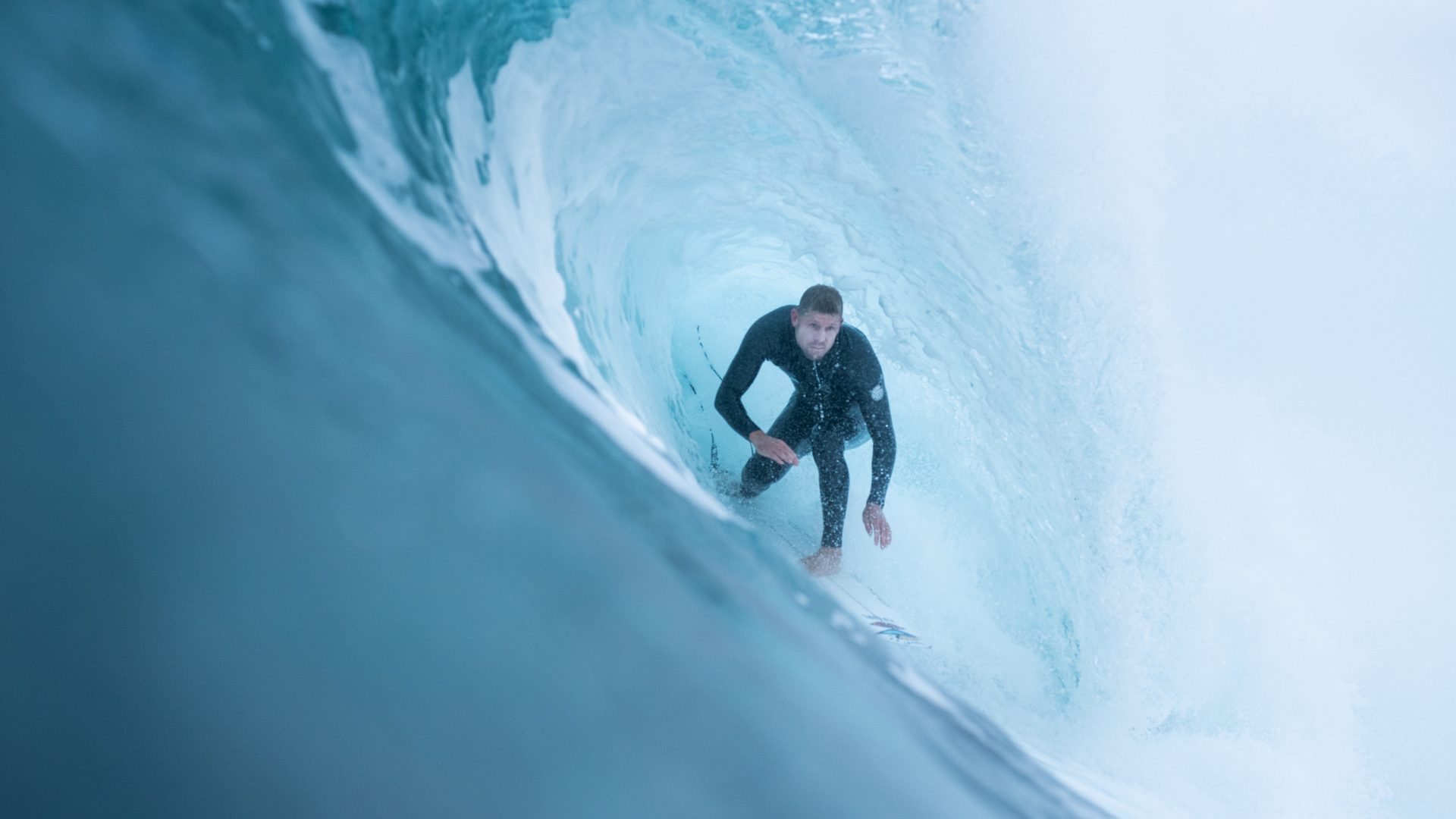
RipCurl Brand Preview
As a general rule, earth tones have replaced bright colours: “Imagine pigeon blue next to more sombre and earthy tones,” suggested William from Jobe. Seasonal collaborations are also a new way to spice up summer wetsuits, like on the women’s models from Sen No Sen, co-developed with the bathing suit brand Albertine. Sen No Sen, is also offering a custom wetsuit programme, as its creator Mathieu Desaphie reminded us. ION is also proud to announce the Capsule Line collection, produced with the artist Michael Cina: “We incorporated his art, which uses different kinds of brushes and textures into our own wetsuit design”, Marc Burhans announced. Last but not least, Patagonia is coming out with a camouflage vest, “inspired by the Gerry Lopez camo sprays, he used in his early days pioneering G-land and Indonesia,” Gabe Davies told us.
To sum it all up, the spring/summer 2019 collections won’t revolutionize the neoprene market but will continue the competition for excellence that involves an ever-greater reduction of impact on the environmental and – this is new – on the workforce. It’s now up to retailers to pass along the message, hand in hand with the brands.






